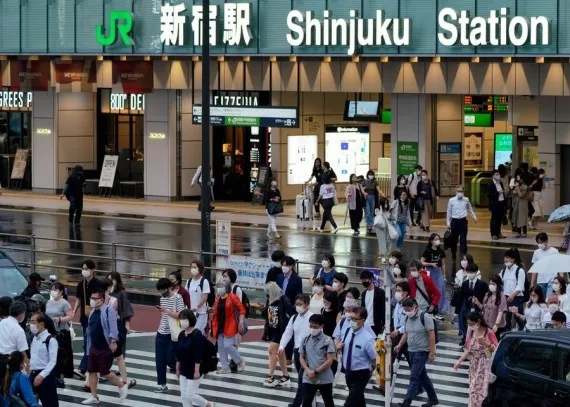Is Japan’s Native Population Facing an Unprecedented Decline?

Synopsis
Key Takeaways
- Japan's native population fell by 908,000 in 2024.
- This marks the 16th consecutive year of decline.
- The total population, including foreigners, decreased by 554,000.
- Foreign residents now number 3,677,463, a 10.65% increase.
- Tokyo is the only prefecture with a native population increase.
Tokyo, Aug 7 (NationPress) Japan's native population has experienced a significant decrease of approximately 908,000 individuals in 2024, marking the most substantial fall since records began in 1968, according to the latest official statistics.
Data from a demographics survey conducted by the Ministry of Internal Affairs and Communications indicates that the number of Japanese nationals was recorded at 120,653,227 as of January 1, 2025, continuing a downward trend for the 16th consecutive year.
Including foreign residents, the overall population stood at 124,330,690, reflecting a decrease of about 554,000 from the previous year.
In contrast to the declining native population, the count of foreign residents surged to a record 3,677,463, up by 354,089 individuals, or 10.65 percent, from the prior year. This statistic has been included in the survey since 2013, as reported by Japan's leading Kyodo news agency.
The prefecture of Hokkaido experienced the highest growth rate in foreign residents at 19.57 percent. Approximately 85.77 percent of these foreign nationals fall within working age, addressing labor shortages prompted by the nation's aging and diminishing population.
This influx of foreign residents has spurred political reactions. Amid rising living costs and concerns over the potential misuse of systems by some migrants, political factions such as the Sanseito party, which advocates a "Japanese First" approach, reportedly gained traction during the July House of Councillors election.
As per local media reports, Japan recorded a mere 687,689 births in 2024, the lowest ever, while the number of deaths reached a staggering 1.59 million.
The most significant declines in native population were observed in the prefectures of Akita (1.91 percent), Aomori (1.72 percent), and Kochi (1.71 percent), with a national average decline of 0.75 percent.
Notably, Tokyo was the only prefecture to witness an increase in its native population, rising by 0.13 percent, primarily due to internal migration. When considering foreign nationals, only Tokyo and Chiba Prefecture registered overall population growth.
Currently, individuals aged 65 and above constitute 29.58 percent of the Japanese population, while those aged 15 to 64 account for 59.04 percent, both figures slightly higher than last year.









